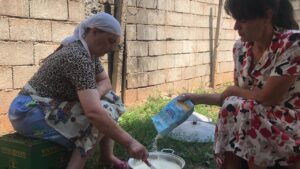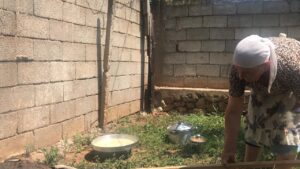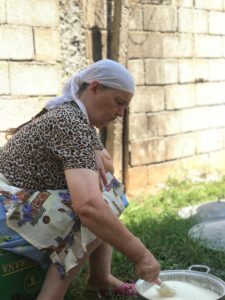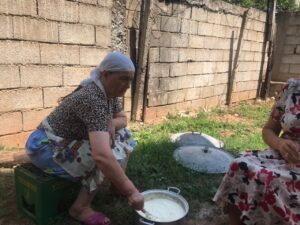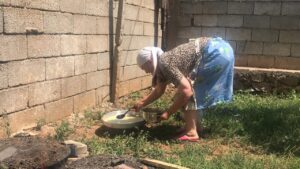Flija or fli is a dish in Kukës district and its provinces, widely used both in villages and the town. Yet, villages are more famed for such a traditional way of cooking.
It mostly features in holidays, such as Eid, Summer Day (March 14), Midwinter Day (January 28), on occasions of family celebrations and festivities, on vaki – a day of mourning or commemorating (death, the seventh-, the fortieth- and one-year Remembrance Day). Flija is also cooked to honor a friend, as a gesture of respect.
In Kukës villages, each and every house has the special tools needed to cook the fli. Cooking the fli takes two to three hours and it entails a long preparation and is really hard work. The inhabitants say that they also engage the children to collect brushwood for lighting the fire.
Ingredients of flija are:
Flour, water, milk, eggs, butter.
The main tools needed for cooking:
Saçi – a metal dome usually uses two such tools – one is heated and the other is put on the baking pan where flija is being prepared and so on.
Sanxhak – a 20 cm above-ground iron tripod where the baking pan is placed
An iron rod or wooden strip to move the saç from the fire and place it on the baking pan.
Fire (cinders), is needed to heat the saç for baking the dough.
Flija is a specialty cooked by every housekeeper, but this cooking process involves also the family’s daughters and daughters-in-law.
Flija is prepared as follows:
Tip the flour into a bowl and mix it with warm water and salt and stir it continuously until it becomes uniform. The dough should be thin, in the form of batter, not dense. In another bowl mix: eggs, oil/butter, and milk and stir them. Once these processes are over, light the fire to continue baking the fli and place one saç which is used for baking the batter on it (fire), while the other saç is used for the liquid mass with eggs or filling mixture.
Put ashes on the ground, place the sanxhak on it and then place the pan for baking the batter (dough) on the sanxhak. Grease the pan, then pour a layer of batter in different ways as deemed convenient by the housekeeper. Put the saç over the pan for baking the batter and after a while, the first layer of batter is baked. Put a layer of the liquid mass and then another layer of batter to continue with another layer of liquid mass and so on. This process is repeated until runs out of batter and filling mixture which marks the end of the baking process.


